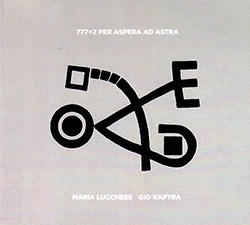
With regard to pre-historic music — particularly vocal pieces — theories abound. Based on certain marks chipped into tools and depictions on petroglyphs, we can identify signs of rhythm being a common occurrence. However, without physical evidence such as the mythological "Stone Tape, Archeoacoustologists (the study of the acoustics related to archeological sites) can only offer tenuous hypotheses, one being that cave explorers used certain tones and calls to indicate safety in passages too deep to allow light, or a unique song could indicate horniness and / or monogamy between two individuals. It's possibly posed as the gesture-based foundation of primitive language to build upon. Looking at modern parental attempts at connection with "Motherese" (a sophisticated term for baby talk), wouldn't it stand to reason that a mother would figure out that cooing and humming calmed a child? Would the superstitious village, after failing to dissuade wolves and lions with cooing and humming, turn to cooing and humming to ask their deities for protection against predators?
Maria Lucchese's work on 777+2 Per Aspera ad Astra might offer some clues as to how someone's tablula rasa would begin communicating. A vocalist, Theremin player, percussionist and otherwise sound and visual artist, Lucchese's current path follows her concentration on the subject of "primitive art...her main themes being the Unconscious and the Abstraction." Her style demands comparison to non-traditional vocalist Ute Wassermann whose invented, spontaneous performance dialect involves anything but words. However, where Wassermann's "embouchure" projects is innocent, relatively grounded and neutral (like the birds she often emulates), Lucchese is a conjurer of power and old magic, digging deep to realize pain and bear forth fiendish sounds that mirror the vintage recordings of alleged demonic possession found in the Library of Congress archives. Before you start thinking "...but Diamanda Galás," there are no operatic moments or spontaneous melisma spliced in for Classical beauty. It's that raw, primeval stuff not concerned with the minutia of sentence structure or subtlety of message.
On opener "Heraclitus It Is in Changing That Things Find Repose", modular synth (?), "breath" (which may be air through a cornet) and understated sonic manipulation from Lucchese's musical partner, Gio Kaptra, offer a long series of thick, rich, single pitched battering rams that split atoms, hiss and frequently overload to foster an unresolved tension. Over that, Lucchese's gestural rise and fall is less a growl than a gasping death rattle instigated by a violent assault. It is desperate, fuming, lifts you up by the throat and snarls "I'm going to come for you and yours, motherfucker" until the last air escapes her lungs.
(I would liken this to the Game of Thrones scene where "Red Priestess" Milisandre gives birth to a shadow child, but I watched that anew and attest that it pales in contrast to Lucchese's aesthetic).
"Giordano Bruno Innumerable Suns Exist, Innumerable Earths" is similarly anxious, though less aggressive in its foundation of synthetic lava bubbles and ghostly shrieks (Theremin, voice) that approach and flit to corners of the room. On "Arthus Schopenhauer This Alchemists in Their Search for Gold Discovered Many Other Things of Greater Value", Lucchese introduces another of her characters. This one scratches around in the dark of a hut like a manic schizophrenic self-collaborating in chirps, inhaled vowels and eclipsed consonants, snores and snorts. Kaptra provides a faint amount of feedback to propel the piece in a linear fashion.
The latter half of the disc embraces this oscillation between light and dense, child-like and oppressive, with increased orchestration via bells and ringing metal, squiggling Theremin work, synth percolations and, of course, heavy breathing. After twelve minutes of a barely-changing droney wall, the finale, "Friedrich Nietzsche Metaphysics", commences with a slow meditative huff; in through the nose, out through the mouth, focusing on the rise and fall...and fall...and fall of the chest.
We could go into the titles, all mentioning philosophers and scientific methods with the CD art asking "Where is the cosmos and where is the mind?" But with those last notes, I would prefer that the spirits of the Anasazi buried near my neighborhood, the house of suicides one block up the street and my dogs' ears would now stop standing at attention at my front door. Please.
Comments and Feedback:
|



